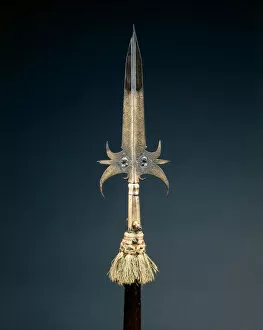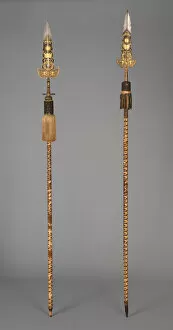Partizan Collection
"Unveiling the Unknown Partisan Statue in Tirana, Albania: A Symbol of Resistance and Unity" In the heart of Tirana
All Professionally Made to Order for Quick Shipping
"Unveiling the Unknown Partisan Statue in Tirana, Albania: A Symbol of Resistance and Unity" In the heart of Tirana, Albania stands a remarkable statue that pays homage to an unknown partisan. This powerful figure represents the unwavering spirit and courage displayed by Albanian fighters during their struggle for liberation. The origins of the term "partisan" can be traced back to Northern Italy in the late 16th century. Created by an anonymous artist, this early representation embodied rebellion against oppressive forces. Similarly, a French version emerged in the early 17th century, crafted by another mysterious creator. One notable example is a steel and wood partisan dating back to around 1650. Its intricate design showcases both strength and elegance, reflecting its significance as a weapon wielded by those fighting for justice. An engraving simply titled "Partizan" captures the essence of this historical artifact. The detailed depiction highlights its craftsmanship while emphasizing its role as a symbol of resistance throughout history. Another extraordinary piece from between 1550-1600 features steel and wood components intricately combined with leather accents. This particular partisan exemplifies how weaponry evolved over time while remaining true to its purpose – defending freedom. Moving forward in time, we encounter three partisans carried by Louis XIV's bodyguard in France during his reign from ca. 1658-1715. These exquisite examples demonstrate how partisans became not only instruments of war but also symbols of power and protection within royal circles. Interestingly enough, Leonardo da Vinci himself explored various military innovations including chariots armed with scythes resembling tanks alongside depictions of partisans around 1480 (1945). His visionary mind foreshadowed future advancements while paying tribute to these formidable weapons' historical significance. Fast-forwarding to more recent times brings us closer to home – Belgrade's liberation in October 1944 witnessed brave individuals wielding partisans as they fought for freedom.












